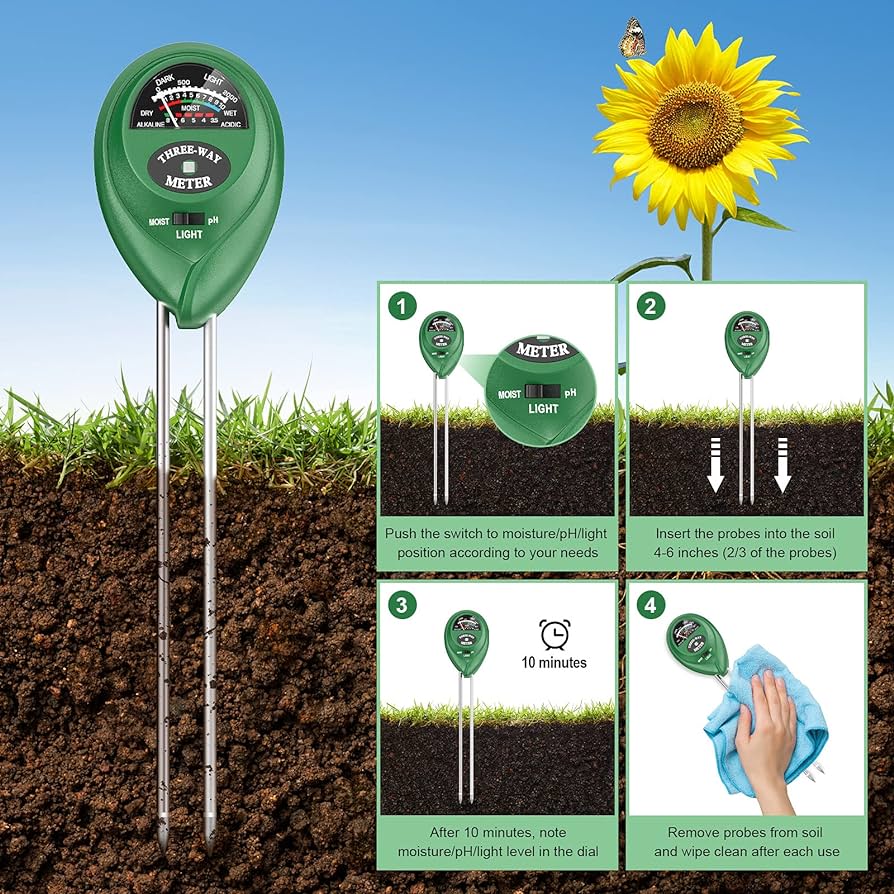It’s that time of year for insects and bugs to emerge. Although some spring and summer bugs, like butterflies and ladybugs, are fun to spot and look at, many of them can be a nuisance or cause damage to your lawn and garden. A yard swarming with insects can quickly make spring and summer days go downhill. After all, who doesn’t enjoy afternoons sunning by the pool or throwing a football? Some of the most common lawn insects at this time are fire ants, mole crickets, chinch bugs, grub worms, and spittlebugs.
Fire Ants
Fire ants are an invasive species that were accidentally imported into the United States from South America in the 1930s. Signs of a fire ant infestation include loosely constructed mounds throughout the lawn. These ants are usually bright orange in color, which is what gave them the name “fire” ants. Fire ants don’t only bite at the heels of you or your pet’s feet—they can also harm lawns by disrupting the moisture and root systems that keep it healthy. Mowing and maintenance become more complex with these mounds spread out throughout the yard as well.
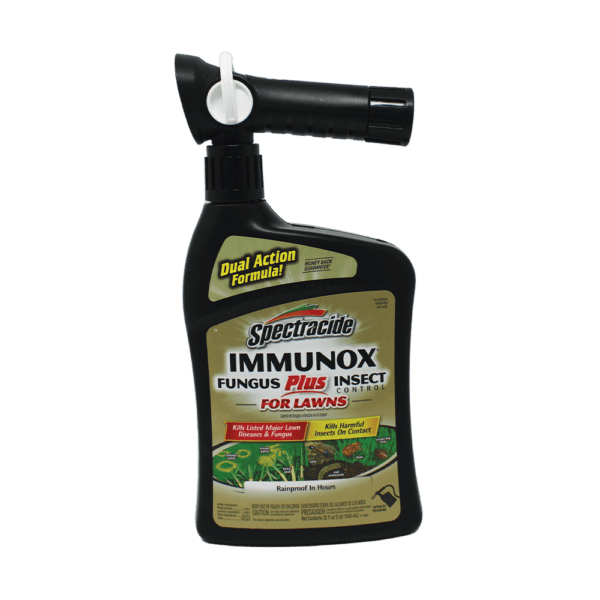
Spectracide Immunox Fungus Plus Insect Control for Lawns protects your lawn from common lawn diseases and kills insects upon contact.
Mole Crickets
Mole crickets are unsightly insects that burrow into the ground beneath your grass to feed on its roots. You can identify a mole cricket infestation by spotting the entrances to their tunnels, which push up soil and grass, and the presence of dying grass. Mole crickets are about 1–2 inches long and have large front claws they use for digging. Left untreated, these little guys can destroy an entire lawn. Another sign of mole crickets is actual moles inhabiting your soil. If you start noticing mole tunnels, you can almost bet there are mole crickets or some other pest damaging your lawn that the moles are feeding on.

Spectracide Triazicide Insect Killer For Lawns & Landscapes Concentrate offers control of a large variety of pests and kills over 260 insects upon contact.
Chinch Bugs
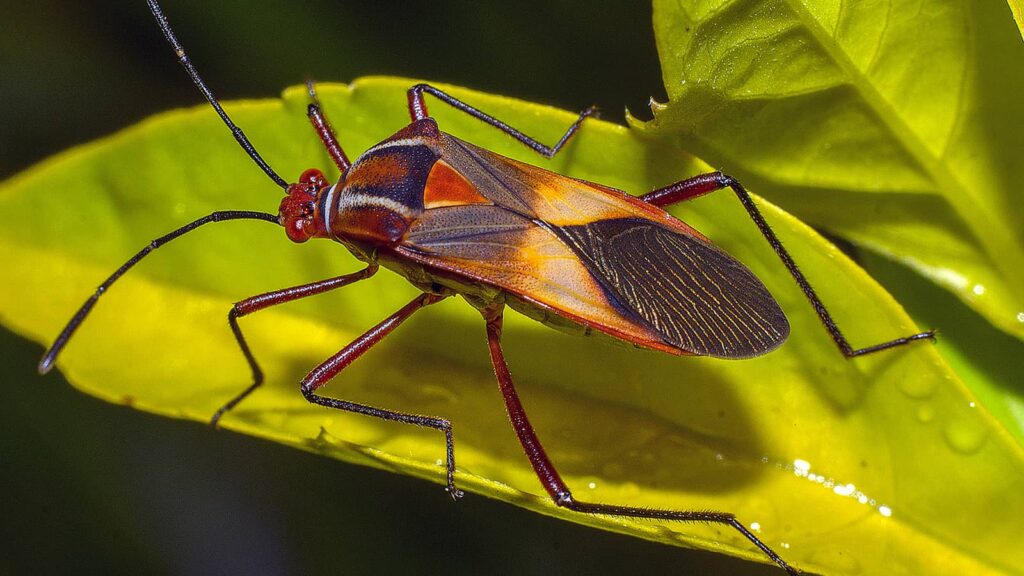
Largely known for their love of St. Augustine lawns and other turfgrasses alike, chinch bugs can demolish an entire yard given the right amount of time. They suck on the blades of grass and then inject the grass blades with poison found in their saliva that stops water movement within the blade. As a result, grass turns yellow and dies. Over time, chinch bugs move outward, creating large patches of dead grass. Ideally, Chinch bugs prefer heavily fertilized lawns and grass with heavy thatch layers to feed and nest in.
Spectracide Triazicide Insect Killer for lawns, as mentioned above, is a good course of treatment for chinch bugs as well.
Grub Worms
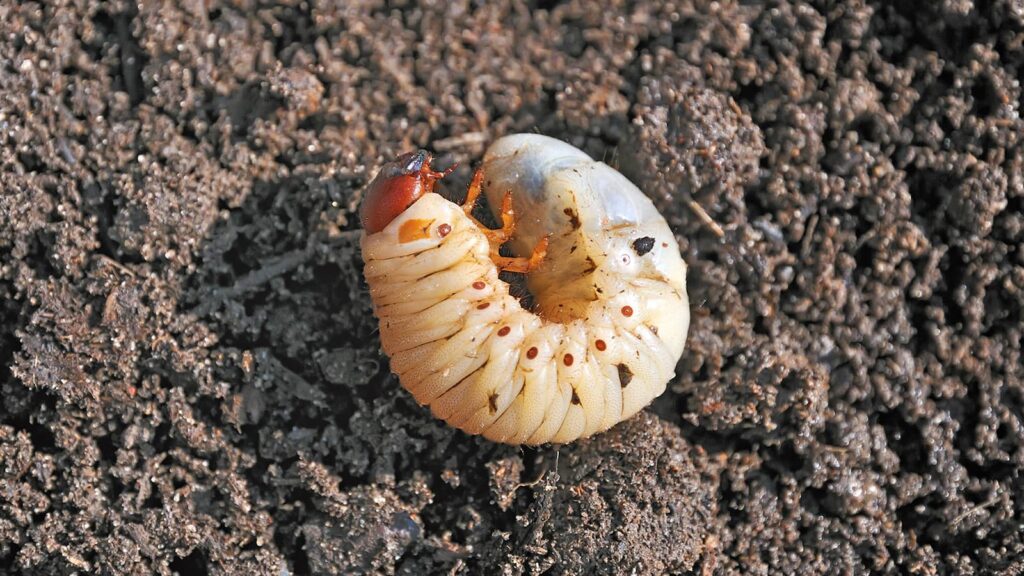
Grub worms are the some of the most infamous lawn insects known for their ability to kill grass below the soil by feeding on its roots and eating grass blades and other vegetation once they’ve turned into adult beetles. A good way to tell if grub worms are invading your lawn is by spotting an increased presence in burrowing mammals like moles, noticing an increased amount of weeds due to your lawn weakening, or spotting dying and damaged grass areas. Examine several soil selections throughout your lawn and garden. The size of the soil selections you collect should be 3–4 inches in length and four inches deep. Treatment is necessary if you find more than five grub worms per square foot. Grub worms are cream-colored, have six legs at the front of their body, and usually curl into a “C” shape.
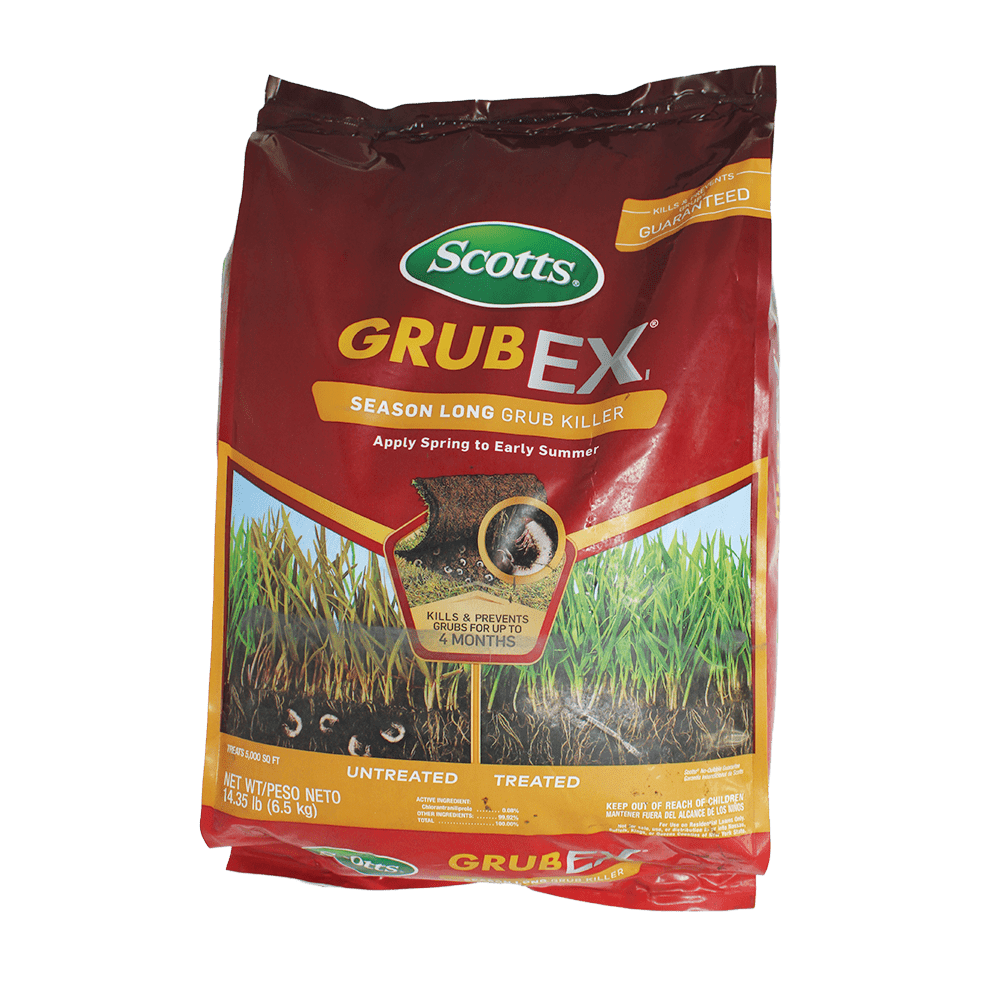
Scotts GrubEx will control and prevent certain grub types that can cause severe damage to your lawn.
Spittlebugs
Spittlebugs mostly live and feed on the blades of centipedegrass; however, they can be found in other types of grasses like St. Augustine. The best way to identify these pesky insects is by spotting them in your lawn. Walking through your lawn will usually cause them to start hopping around, making it easy to spot them. Spittlebugs are small insects with wings that are black or dark brown. They typically have two bright red or orange stripes running across their backs. If you suspect a spittlebug problem, you can also closely examine the grass. You may notice a frothy substance down in the thatch layer that nymphs typically live in or a purple or white stripe down the grass blade.



